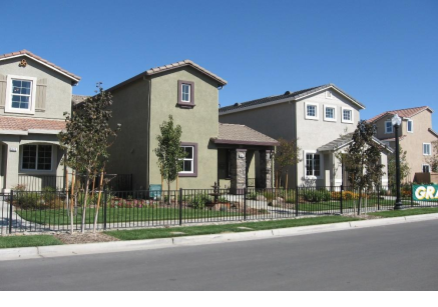
Living in a common interest community can have some amazing benefits including access to amenities that you might not normally have access to such as a community swimming pool or tennis courts.
But as a board member, it’s important to consider how all these added amenities leave the HOA vulnerable to legal action. That’s why it’s important to have a risk management plan to help manage your association’s liability risk.
Actively analyzing risk factors that your association might be faced with can help avoid problems before they arise and can even save the association money.
For example, it can help prevent potential litigation costs. It can also help your association better identify what levels of insurance coverage is appropriate which could save money by adjusting your coverage and reducing your premiums.
Whether you are looking to save money or prevent issues before they arise, here are five easy steps to reduce your association’s liability risk.
Identify and Evaluate Potential Risks
Almost all modern companies today incorporate risk management into their business plan. A homeowner’s association should be no exception. While your homeowner’s association may not be a for-profit corporation, it’s still important to adopt sound risk management processes.
The first step to reducing your HOA’s liability risk is to take an inventory of amenities that the community offers that can be potentially hazardous. Figuring out what features could be more prone to accidents and injuries will enable you to create a plan to address any worst-case scenario.
A few of the most common amenities that carry more risk than others include swimming pools, water features (including ponds or creeks), work-out facilities, playgrounds, and recreational spots (i.e., tennis courts, basketball courts, volleyball areas).
Other less common amenities may also warrant a review. For example, designated, off-leash pet areas could be a risk of injury should a pet bite another homeowner. According to recent data, nearly 67% of all U.S. households own a pet*.
Similarly, clubhouses or other common social areas that include grills or stoves could pose a risk of there being a fire. It’s also a good idea to review your HOA reserve study periodically.
Address and Remedy Safety Concerns
One of the best ways to lower your association’s liability risk is to make sure common areas are maintained and well kept. Keep in mind that some shared areas may require more attention than others. For example, recreational facilities that are frequented often may require more upkeep than a park or playground.
If you do happen to identify deferred maintenance or potential safety concerns, have the repairs addressed as soon as possible. While it’s not always possible, it may be a good idea to inhibit access and prevent members using amenities that require maintenance until all the concerns can be addressed and remedied.
Furthermore, consider implementing a routine inspection schedule for all amenities that might have enhanced liability risk. This will help ensure concerns are identified quickly so that potential remediation can be approved promptly by the board.
Additionally, keeping an inspection checklist helps create a paper trail to counter the point that a member might try to argue that the HOA was being negligent about potential safety risks affecting community members.
Better yet, hiring a processional service technician to routinely check amenities is a smart move. This will not only ensure that all items are in proper working order, but it should also guarantee that any work done meets proper codes and standards.
Create Rules, Policies, and Procedures
As a board member, you are used to following policy and procedures. For example, you follow the guidelines, policies, and procedures set forth in the governing documents for your association.
Creating and enforcing similar rules, policies, and procedures that govern how members use amenities throughout the community can also be equally beneficial. This can help reduce unwanted, inappropriate behavior surrounding how certain amenities might be used.
But it’s not enough to simply create rules, policies, and procedures if members are not made aware they exist. Consider posting amenity specific rules and regulations in plain sight at key access points so that all members have a chance to digest and understand the key requirements.
For example, diving in a pool could be considered risky behavior and could be a potential safety concern. To mitigate this risk, having a no diving policy in place and posted at the pool entrance could help prevent members from undertaking this unnecessary risk.
Remove Any Adverse Concerns
Not all liability risks can be adequately addressed. Moreover, as a board you might agree that simply reducing the risk isn’t enough. If you end up coming to this decision, sometimes it’s best to eliminate an amenity rather than retaining unnecessary risk.
Consider monkey bars on a playground as a prime example. If members keep getting hurt on the bars, rather than post safety procedures, it might be better and far less difficult to simply remove the monkey bars altogether.
If you do choose to eliminate an amenity, make sure it’s not a unilateral decision. It’s always a good idea to communicate with all members of the association when making a decision that impacts everyone.
Retain Sufficient Liability Insurance
Sometimes you can only reduce your risk so much. In fact, there will always be various degrees of risk that the association will have to face. With respect to liability risk, it’s always good to have a backup plan if the association is found liable for something.
Retaining the right amount of liability insurance can help protect your association if a casualty event were to occur. To help further reduce your HOA’s risk, it’s important to frequently check your coverages.
Similarly, checking your coverages on a routine basis will help you identify opportunities to adjust as the levels of risk that threaten your association change. In some cases, it may be warranted to lower your coverage which may also have the added benefit of reducing the insurance premiums that the HOA must pay. These options should first be addressed with your property management company.
Are you seeking new HOA management? Association Management Concepts Inc. (AMC) is locally owned and operated in the greater Sacramento Area. AMC has a full team of professionals managing over 70 HOAs throughout five counties in Northern California. If you’re considering a change, we’re happy to answer any questions. Contact us today!
Sources
*Insurance Information Institute. (n.d.). Facts Statistics: Pet Ownership and Insurance. Retrieved August 11, 2021, from https://www.iii.org/fact-statistic/facts-statistics-pet-ownership-and-insurance






